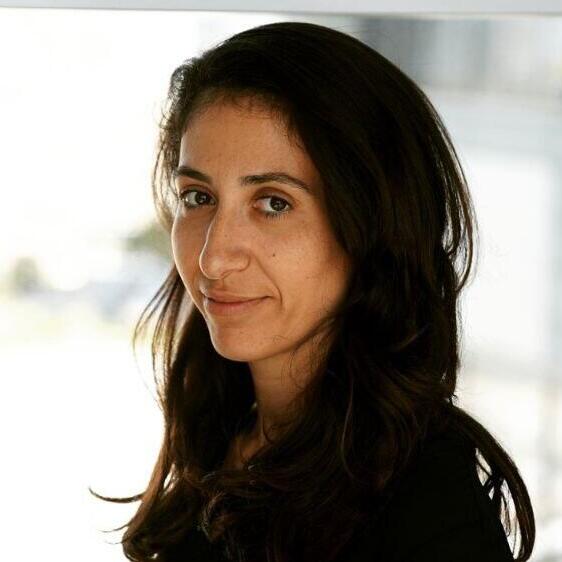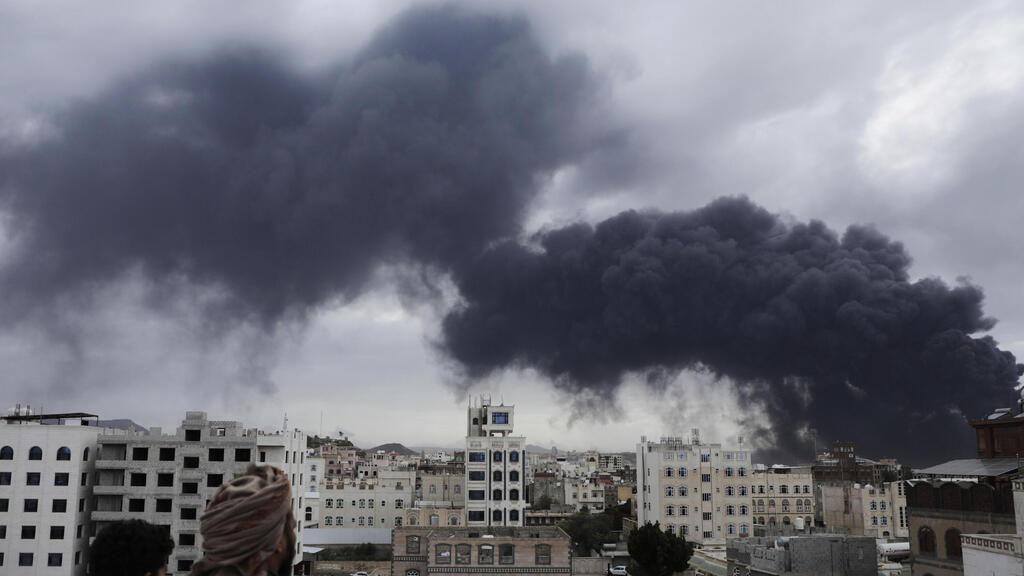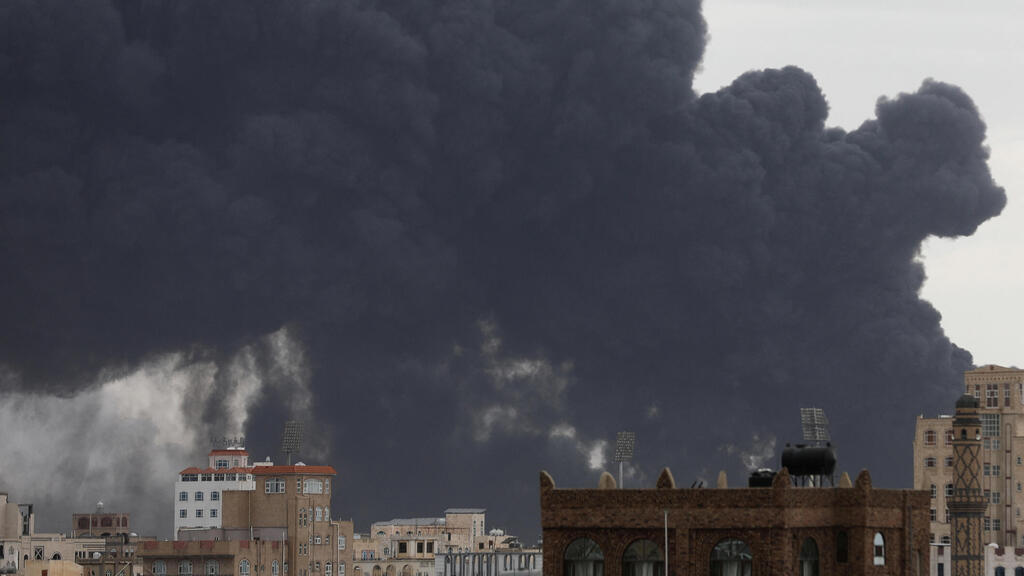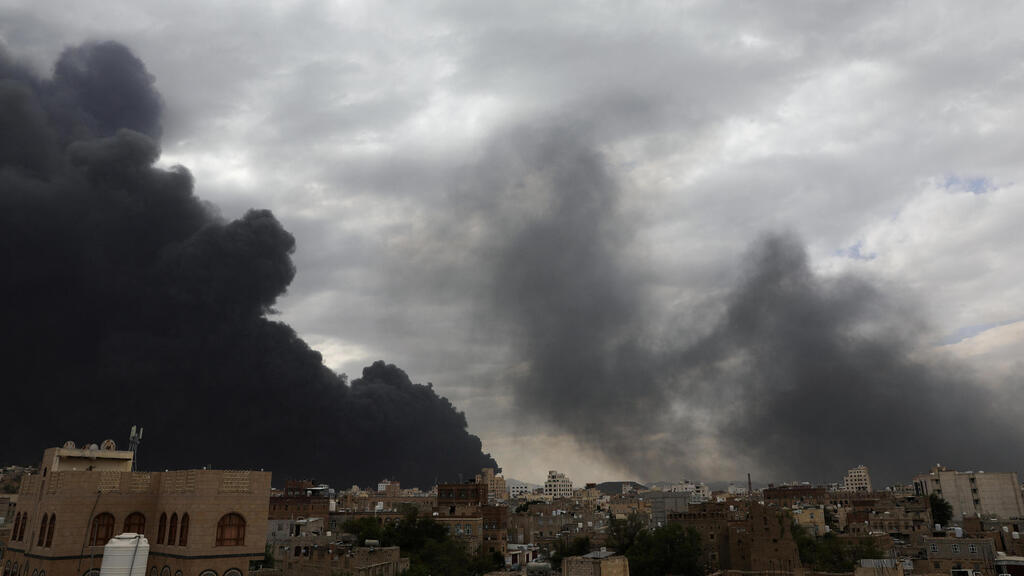Following the second Israeli airstrike in Yemen within 24 hours—carried out in response to the ballistic missile launched by the Houthis that exploded near Ben Gurion Airport on Sunday—a resident of Sanaa described to Ynet the panic in the streets during the attack and the heavy smoke rising over the Yemeni capital.
“All the skies over Sanaa are filled with smoke. There’s an atmosphere of panic and fear,” he said. According to him, “Smoke is rising from the south of the city due to the strike on the Khaziz power station, and the skies over northern and central Sanaa are covered with smoke from the strike on the airport.”
Sanna resident captures smoke during Israeli strike
Israeli officials confirmed that the Israeli Air Force struck targets in and around Sanaa on Monday afternoon. Earlier, IDF Arabic-language spokesperson Lt. Col. Avichay Adraee issued an unprecedented message calling for the evacuation of the international airport in the Yemeni capital. “The IDF is determined to continue operating forcefully against anyone who poses a threat to the residents of Israel, at any distance required,” the IDF Spokesperson’s Unit stated.
The IDF said it targeted the Sanaa airport, major power stations, and a cement factory. In a statement following the strike, the IDF spokesperson added, “For the second time in less than 24 hours, the Israeli Air Force struck terror targets belonging to the Houthi terror regime in Yemen.
The Israeli Air Force targeted and destroyed Houthi terror infrastructure at the central airport in the Sanaa area, rendering it completely inoperative. The airport, like the Hodeidah port that was struck last night, is used by the Houthi terror group to transfer weapons and operatives and is routinely operated by the Houthi regime for terrorist purposes.”
The spokesperson further noted: “Several central power stations in the Sanaa area were also targeted. These are used by the Houthi terror regime as key infrastructure for electricity supply to its regime. In addition, the 'Al-Amran' cement factory north of Sanaa was struck—an important asset for the Houthi regime used for constructing tunnels and military infrastructure. Damaging the factory impacts the Houthi regime’s economy and military build-up.”
The IDF said the strikes were carried out in a focused manner, with precautions taken where possible to minimize harm to civilians and civilian property. The operation was approved by the Air Force commander and the IDF chief of staff.
“The Houthi terror regime has operated over the past year and a half under Iranian direction and funding, seeking to harm Israel and its allies, destabilize the regional order, and disrupt global maritime freedom,” the statement added.
Arab media reported widespread panic in Sanaa. According to Sky News Arabia, all civilian aircraft and the terminal at Sanaa International Airport were destroyed. Saudi outlet Al Arabiya, citing sources, reported that airport staff were evacuated. Al Hadath, also Saudi-owned, reported that roads leading to the airport were closed, with “panic among residents and shopkeepers in the airport area,” and significant displacement from the area.
Reports from Yemen said the Israeli strikes targeted Sanaa and Amran provinces. Senior Houthi official Mohammed al-Bukhaiti told Qatar’s Al-Araby TV, “We will impose a new equation: a blockade will be met with a blockade. Our struggle against the United States, Britain, and Israel will continue until the aggression against Gaza ends. We still have many Israeli targets that we haven’t attacked yet.”
Another senior Houthi figure, Nasser al-Din Amer, claimed: “The enemy focused its attacks on fuel tanks, power stations, and cement factories to ignite fires and create clouds of smoke—an image very different from the one caused by the Yemeni strike. Most of these targets have already been hit dozens of times in recent years. A response is coming, and the naval and aerial blockade on Israel will not be lifted until the attacks on Gaza stop and the siege is removed.”








